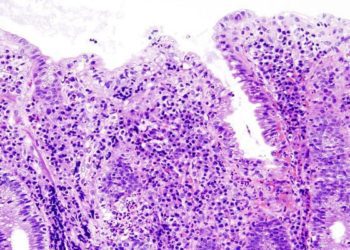2 Minute Medicine Rewind June 10, 2024
Dose/Exposure Relationship of Exercise and Distant Recurrence in Primary Breast Cancer
1. Across a follow-up period of approximately 5 years, there was a non-linear relationship between exercise at breast cancer diagnosis and distant recurrence-free interval (DRFI), with greater exercise exposure up to a certain threshold correlating with greater reductions in the risk of recurrence.
2. The relationship between the level of exercise at diagnosis and DRFI events was only observed in the premenopausal population and not the postmenopausal population.
Evidence Rating Level: 2 (Good)
While studies have shown that exercise both before and after breast cancer (BC) diagnosis is associated with reduced mortality, the association between exercise and disease recurrence after BC diagnosis has not been thoroughly investigated. This multicentre prospective cohort therefore sought to evaluate the relationship between exercise dose and distant recurrence-free interval (DRFI) in BC. Between March 2012 and February 2018, 10,359 patients (mean [SD] age = 56.3 [11.2] years) with stage I-III BC were assessed at baseline and follow-up visits at 1, 2, 4 and 6 years following diagnosis. To account for potential confounding variables that could influence exercise dose at diagnosis, propensity score inverse probability (IPTW) Cox models were used (n = 9,051). Exercise dose was obtained by multiplying the weekly activity session frequency by the average session duration, weighted by the corresponding standardized metabolic equivalent of task (MET) value to yield a total MET-hours per week (MET-h/wk). Across the overall cohort, there was a nonlinear relationship between pre-treatment exercise and DRFI (P = 0.0097), with exercise dose beyond 5 MET-h/wk showing an inverse linear reduction in recurrence risk up to a threshold of 25 MET-h/wk. When comparing an exercise dose of <5 MET-h/wk to an exercise dose of ≥ 5 MET-h/wk in the IPTW population, the adjusted hazard ratio was 0.82 (95% CI = 0.67 to 1.00). Interestingly, this relationship between pre-treatment exercise and DRFI was only observed in the IPTW premenopausal cohort and not the IPTW postmenopausal cohort. Overall, this study found that the relationship between exercise dose at BC diagnosis and risk of DRFI events is nonlinear and further studies investigating the antitumour activity of exercise therapy are warranted.
An Adaptive Telephone Coaching Intervention for Patients in an Online Weight Loss Program
1. The addition of 3 or 12 weeks of telephone coaching for individuals with suboptimal response in an online weight loss program at 1 month improved weight loss outcomes compared to those not provided coaching.
Evidence Rating Level: 1 (Excellent)
Intensive behavioural programs revolving around counseling and lifestyle modifications are commonly used as effective interventions for obesity. However, such interventions are often difficult to access due to geographic constraints or financial barriers. While automated online behavioural weight loss (WL) programs may alleviate these barriers, such programs are often associated with lesser WL outcomes. This randomized controlled trial therefore sought to investigate the effect of additional telephone coaching for responders with suboptimal WL outcomes in a 12-month online WL program compared to those without coaching. 437 patients (mean [SD] age = 50.8 [11.4] years) were included in the analyzed sample, with 148 being assigned at baseline to receive extended coaching (telephone coaching for 12 weeks), 143 to brief coaching (telephone coaching for 3 weeks) and 146 to control (no coaching). Participants experiencing a suboptimal WL response (<4% WL) at 1 month in the brief or extended coaching groups received telephone coaching starting from week 5. At 4 months, percent WL was significantly greater in the extended coaching group [mean [SD] WL = -7.0% [5.1%]) and brief coaching group (mean [SD] WL = -6.2% [4.7%]) than the control group (mean [SD] WL = -4.5% [4.7%]) (P < 0.001). At 12 months, percent WL was significantly greater in the extended coaching group [mean [SD] WL = -5.5 [6.7%]) than the control group (mean [SD] WL = -3.9% [7.4%]) (P = 0.03). However, there was no difference in percent WL between the brief coaching group and control group at 12 months. Overall, this study showed that the addition of an intervention for individuals with suboptimal WL responses enrolled in an online WL program may be an effective alternative treatment for the management of obesity.
Delays to Antibiotics in the Emergency Department and Risk of Mortality in Children With Sepsis
1. Administration of antibiotics beyond 330 minutes from emergency department arrival in pediatric patients with sepsis was associated with increased 3-day and 30-day sepsis-attributable mortality.
Evidence Rating Level: 2 (Good)
Early administration of antibiotics has long been an important recommendation in the treatment of sepsis by various guidelines. However, a more detailed understanding of the association between time to antibiotic administration and pediatric sepsis outcomes, including clinical differences at multiple time points, has not been well established. This multicentre, retrospective cohort study therefore sought to investigate the association between time from sepsis identification to antibiotic administration with sepsis-attributable mortality. Pediatric patient presentations to the emergency department (ED) with recognized sepsis within 1 hour of arrival between January 1, 2017 and December 31, 2021 were identified to yield 19,515 cases. The primary exposure was the number of minutes to antibiotic administration while the primary and secondary outcomes were 3-day sepsis-attributable mortality and 30-day sepsis-attributable mortality, respectively. The odds of 3-day sepsis-attributable mortality increased for every 30-minute increment past 330 minutes for time to antibiotic administration (OR = 2.44, 95% CI = 1.28 to 4.62, P = 0.01). Compared to patients who received antibiotics earlier than 330 minutes, patients who received antibiotics later than 330 minutes had increased odds of sepsis-attributable mortality at 3 days (OR = 3.44, 95% CI = 1.20 to 9.93, P = 0.02) and 30 days (OR = 3.63, 95% CI = 1.59 to 8.30, P = 0.002) under adjusted analysis. Overall, this study found that among pediatric patients with sepsis presenting to the ED, sepsis-attributable mortality increased with antibiotic administration beyond 330 minutes from arrival and further supports the crucial importance of timely antibiotic therapy in pediatric sepsis.
Long-term survival follow-up for tebentafusp in previously treated metastatic uveal melanoma
1. Across a median follow-up of 48.5 months, usage of tebentafusp for patients with metastatic uveal melanoma was associated with a median OS that was double those observed historically in similar patient populations.
2. Low circulating-tumour DNA (ctDNA) levels at baseline and greater reductions in ctDNA levels at week 9 of treatment were associated with improved OS.
Evidence Rating Level: 1 (Excellent)
Metastatic uveal melanoma (mUM) has historically been associated with a poor prognosis owing to a lack of treatment options and an agreed-upon standard of care. Tebentafusp, a novel ImmTAC (Immune mobilizing monoclonal T-cell receptor Against Cancer) drug, has shown favourable survival outcomes in previously untreated mUM and treatment-refractory mUM. This single-arm, international, phase 1/2 study therefore sought to investigate the efficacy and safety of tebentafusp at 4 years of follow-up which represents the longest follow-up data to date. Patients over 18 years of age with a confirmed diagnosis of mUM and a life expectancy greater than 3 months were placed into either dose escalation (n = 19) or expansion cohorts (n = 127). The main efficacy outcome of interest was overall survival (OS). Baseline, 5-week and 9-week serum circulating-tumour DNA (ctDNA) levels were assessed to examine potential predictors of tebentafusp efficacy. The median OS was 17.4 months (95% CI = 13.1 to 22.8 months). Median OS rates in the expansion phase cohort at 1, 2, 3 and 4 years were nearly double those reported in a recent meta-analysis of other treatment modalities in mUM, with a hazard ratio of 0.54 (95% CI = 0.42 to 0.69) favouring tebentafusp. Further, low or undetectable levels of ctDNA at baseline, as well as greater reductions in ctDNA levels by week 9 were associated with improved OS. Overall, this study found that patients with mUM treated with tebentafusp showed median OS rates that were approximately double those observed historically in similar patient populations, and that ctDNA levels may be a reliable biomarker of response for tebentafusp.
Tofacitinib in Pediatric Ulcerative Colitis: A Retrospective Multicenter Experience
1. Management of pediatric ulcerative colitis with tofacitinib successfully induced corticosteroid-free remission in 16% of patients at week 8 following treatment.
Evidence Rating Level: 2 (Good)
Tofacitinib, a non-selective inhibitor of Janus kinase (JAK) enzymes, was approved in 2018 for the treatment of moderate to severe ulcerative colitis in adults. However, it has not yet been approved for pediatric patients and there remains a lack of data regarding the efficacy and safety of tofacitinib in pediatric patients with ulcerative colitis. This multicentre, retrospective cohort study therefore sought to investigate the outcomes of the use of tofacitinib in pediatric ulcerative colitis. A total of 101 children were included in the analysis with a median follow-up of 24 weeks (IQR, 16-54 weeks) following initiation of tofacitinib, all of whom had received prior anti-tumour necrosis factor-α agents. The primary outcome was corticosteroid (CS)-free remission at week 8, while secondary outcomes included clinical response at week 8 and CS-free remission at all time points. 16% of patients (n = 16) achieved CS-free remission at week 8 following treatment, while 30% (n = 30) demonstrated clinical response but did not achieve CS-free remission. At week 24, 23% (n = 20) of 88 remaining patients achieved CS-free remission. No serious adverse events related to tofacitinib were reported in any patients. Overall, this study found that tofacitinib may be a safe and effective option in inducing CS-free remission in pediatric patients with ulcerative colitis previously refractory to other treatment modalities.
Image: PD
©2024 2 Minute Medicine, Inc. All rights reserved. No works may be reproduced without expressed written consent from 2 Minute Medicine, Inc. Inquire about licensing here. No article should be construed as medical advice and is not intended as such by the authors or by 2 Minute Medicine, Inc.







